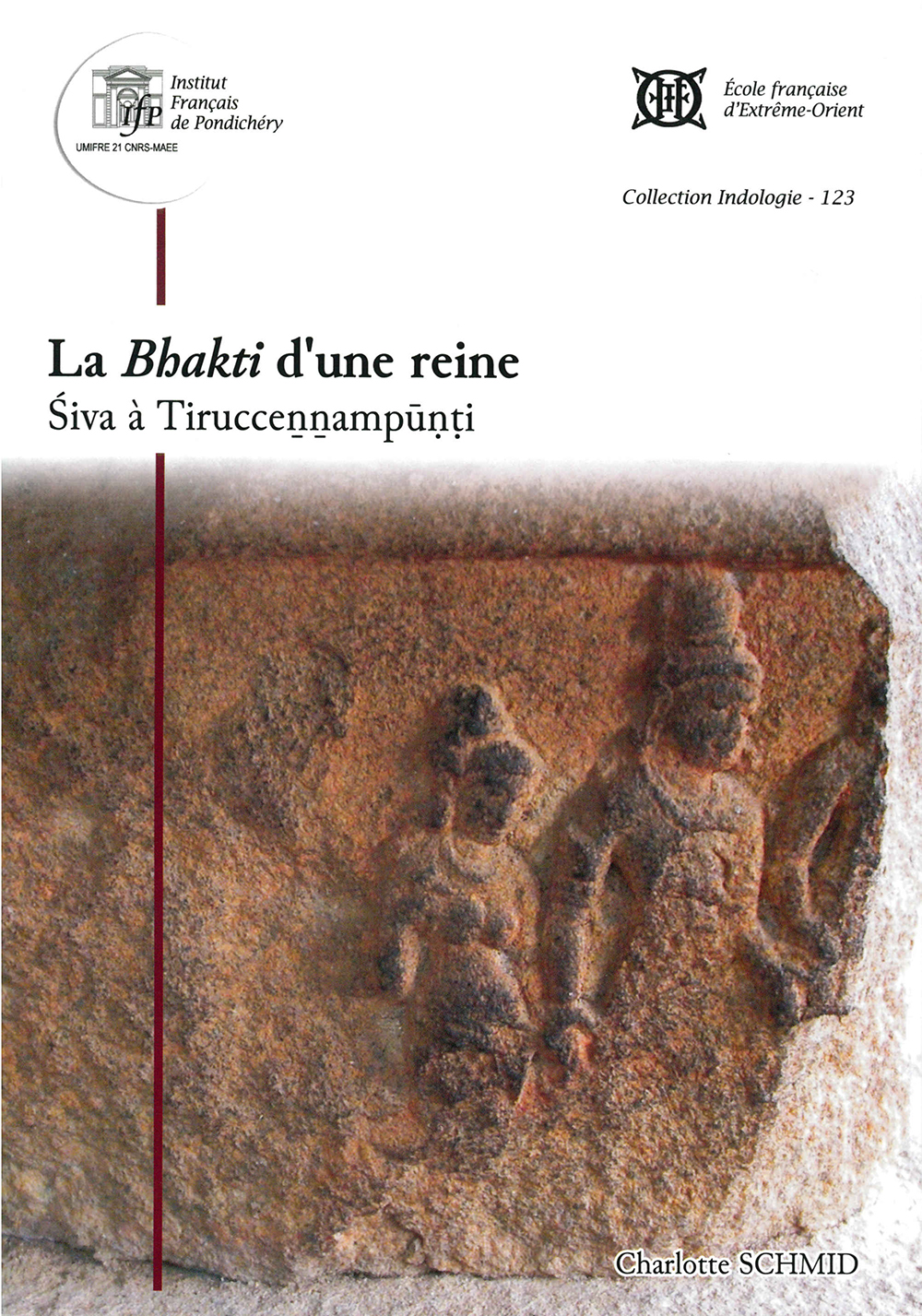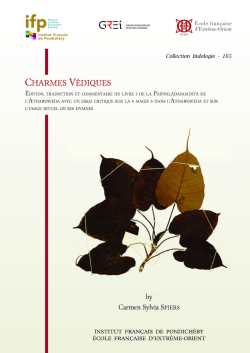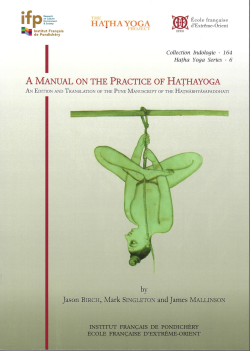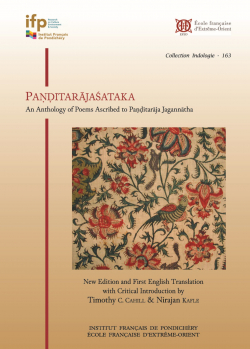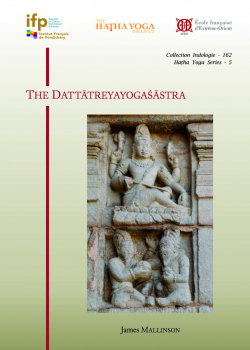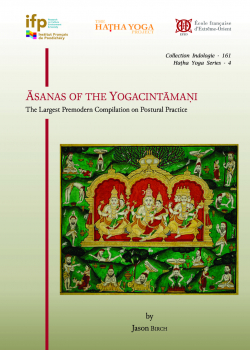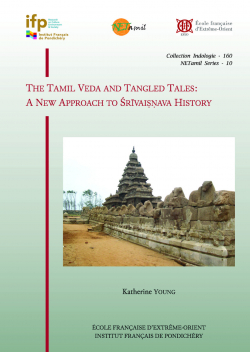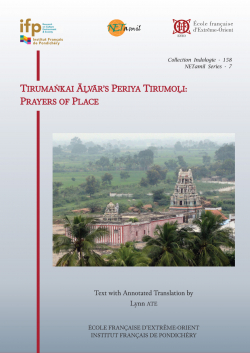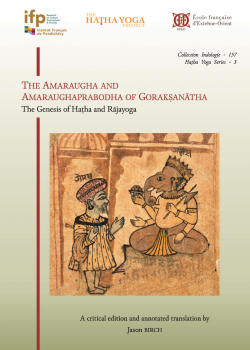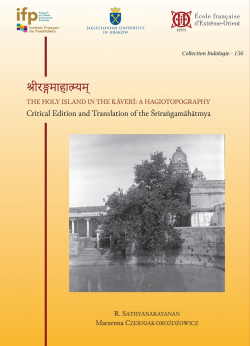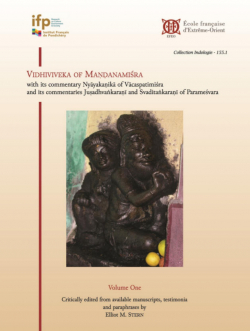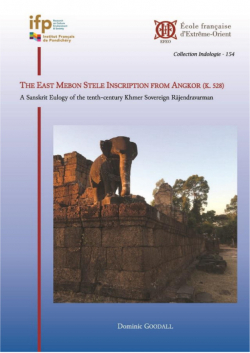The catalog of EFEO Publications includes works on a wide range of disciplines in the humanities and social sciences (archaeology, history, anthropology, literature, philology, etc.), centered on Asia, from India to Japan.
These publications address both specialists, and a wider public interested in Asian civilizations and societies.
La Bhakti d’une reine
Śiva à Tirucceṉṉampūṇṭi
Collection : Collection Indologie
Collection's number: 123
Editor: Schmid (Charlotte)
Edition: EFEO, Institut français de Pondichéry (IFP)
Publication date: 2014
Status : Available
48,00 €
ISBN-13 : 9782855391373
ISSN : 0073-8352
Width : 17 cm
Height : 24,5 cm
Weight : 1 kg
Number of pages : 415
Distributor : EFEO Pondichéry Contact : shanti@efeo-pondicherry.org, distributeur online : scholarswithoutborders@gmail.com, distributeur Chennai : jibh.rkc@gmail.com
Geography : India
Language : French
Place : Pondichéry
Support : Papier
Abstract
The heart of this book is a temple built in the Tamil-speaking South in the late 9th or early 10th century CE, at Tirucceṉṉampūṇṭi, near Trichy. Now abandoned, that temple is one of the earliest known Śaiva temples of the Cōḻa period. The evidence gathered here suggests that this shrine, dedicated to Śiva as ""the great god of Tirukkaṭaimuṭi"", was raised in honour of a deity who is lauded in the Tēvāram (7th - 9th centuries), a poetic anthology of the earliest surviving Tamil Śaiva hymns. A Pallava queen, Māṟampāvai, whose inscriptions are engraved on pillars found half-buried on the site, was the most prominent among its early patrons. The difficulty pinning down her complex identity echoes the difficulty of defining the site, which seems like a missing link connecting different corpora of evidence: poetic texts, epigraphs, carvings, Pallava monuments and Cōḻa-period art. The site is therefore explored here in three ways: by an attempt to define ""Cōḻa art"" while acknowledging the contribution of Pallava royal temples and monuments raised by minor dynasties which call into question the use of any such dynastic label; by an investigation of the relation between the world of texts and that of archaeology through the study of one particular iconographic ensemble and one epigraphical corpus; and by an examination of the relation between royal and local, particularly in the realm of ""Bhakti"". As a woman active in this region who claims in Tamil inscriptions to be a member of a Pallava family famed for its Sanskrit epigraphy, and who appears more closely linked to a merchant community than to Brahmins, Māṟampāvai crystallises the encounters between several worlds. The divine realm is not the least complex of them, for Viṣṇu, Brahmā and female deities are an integral part of the sacred court of the Śiva wedded to this place.
Notes
You can also order this title with our Pondicherry center at the following address:
shanti@efeo-pondicherry.org
Or with the French Institute of Pondicherry at the following address:
library@ifpindia.org
Orders to India must be placed with our center in Pondicherry or the French Institute of Pondicherry.
About the editor
Schmid (Charlotte)
Archaeology of the Indian world
The scientific life of Charlotte Schmid is marked by her stays in India: two years in North India (1991-1993) were followed by an assignment, in September 1999, in the centre of Pondicherry (EFEO), Tamil Nadu, for four years. These two periods of intensive work in India articulate a research led between two spaces of field-work, the North and the South of the subcontinent.
After an attempt to define a colonial culture, the Bactrian Greece, based on the material from Aï Khanum -the most important Greek colony excavated in Central Asia- and classical studies (Greek, Latin, École du Louvre), the discovery of Sanskrit and the reading of La grande route de Bactres à Taxila of Alfred Foucher, pointed to the necessity of field-work.
Firstly, following the road of India to an accessible country, which allows studying the relationships between two types of corpus, texts and archaeological material taken in a broad sense, Charlotte Schmid worked on the first known figures of a major Hindu deity of bhakti, Kṛṣṇa in Mathurā. Today an Indian city of medium size of which Kṛṣṇa-devoted cults have forged cultural identity, Mathurā, with its mosque of the 17th c. and its numerous Jain, Buddhist and Brahmanical remains dated from the 2d c. BC, is loaded with myth. A doctoral thesis supervised by Gérard Fussman and focusing on a confrontation between the archaeological evidence and the texts which made of Kṛṣṇa “the” child of Mathurā, was followed by a research on the iconography and the epigraphy of the Gupta period, as it is accounted for in Le don de voir.
Secondly, the posting in Pondicherry led C. Schmid to study the appearance of the deities of bhakti in the Tamil country. The issue of the relationship between texts and archaeology is conducted in "another" region and on better documented periods of time. The EFEO centre gave access to new fields of research. The work with traditional pundits was not the least of them and C. Schmid started to also investigate Tamil data.
Posted in Paris since 2003, she pursues researches on the figures of Hinduism in Ancient India, fed by lively exchanges with the Indian scholars of the Centre of Pondichéry and by archaeological material (monuments, sculptures, inscriptions). Temples in situ, provided with dozens of inscriptions and sculptures, established between the 6th and the 12th c., as well as the texts, often devotional, connected to them, constitute the basis of, for instance, Sur le chemin de Kṛṣṇa : la flûte et ses voies and La Bhakti d’une reine.
Her seminars at the École pratique des hautes études, her role as editor in chief of Arts Asiatiques and member of the editorial board of the Bulletin de l’École française d’Extrême-Orient, her involvement in the Corpus des Inscriptions Khmères (CIK) provide opportunity for many exchanges with students and colleagues, which, finally, made of Southeast Asia one horizon of the work of C. Schmid.
